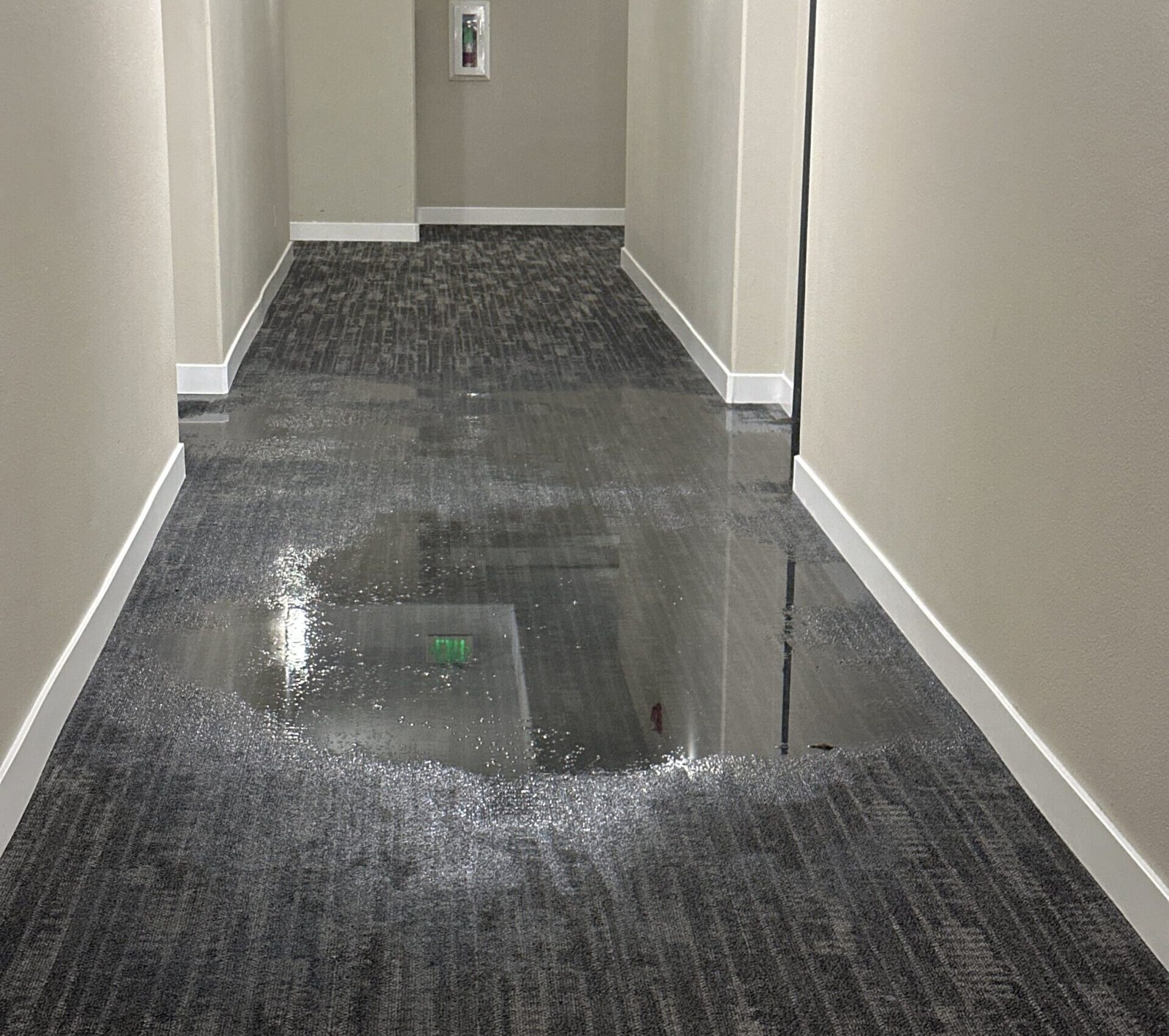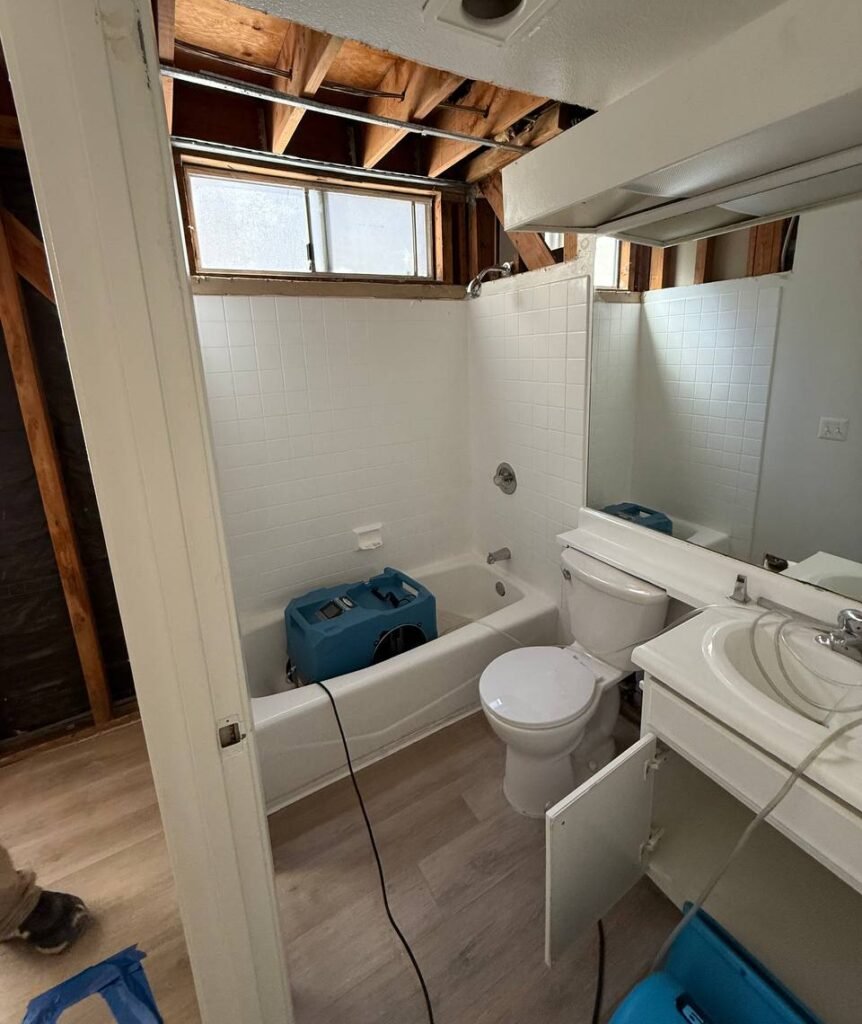24/7 Water Damage Restoration in West Hollywood, CA Fast Local Response
Water damage spreads quickly through West Hollywood’s diverse homes—whether it’s a classic pre-war apartment, a mid-century walk-up, or a new Design District condo. Flat roofs, compact plumbing, and tight utility closets mean leaks can ruin plaster, hardwoods, and even neighboring units in just hours. That’s why Onsite Pro Restoration offers true 24/7 emergency service, sending certified local crews with commercial-grade equipment to your door—day or night.
Get Started
Service Form
Complete Water Damage Restoration
Flat roofs, decks, and parapet details
Many WeHo buildings use flat roofs or decks over living space. Ponding at drains and scuppers, failed penetrations, and parapet cracks let stormwater track into ceilings. Once insulation is wet, odor and microbial risk climb without controlled dry-down.
Shared stacks and aging supply lines
Around Fairfax, La Brea, and Fountain, older galvanized or copper lines and shared stacks are common. Pinhole supply leaks and stack failures move water vertically and laterally between units.
Windows and stucco in wind-driven rain
Hairline stucco cracks and older window assemblies along Santa Monica Blvd and Sunset allow rain to bypass paper and wet sheathing. Staining appears weeks later at lower walls and built-ins.
Compact utility spaces and mechanical closets
Clogged HVAC condensate lines and pan overflows wet framing in tight closets. Restricted vents trap humidity. Laundry nooks concentrate moisture after even small appliance leaks.
Hillside drainage and planters
Above Sunset, complex flashing and irrigation against stucco push water into sheathing and sill plates. Negative grading near planters wets toe-kicks and base plates after storms.

Our IICRC S500 water restoration process
1) Emergency response and scope
Live dispatch 24/7. We secure the source, map wet materials with pin/pinless meters and thermal imaging, and set scope per S500 so you know exactly what will be dried, opened, or removed. Lead/asbestos rules for pre-1978 materials are addressed before disturbance. HOA access and quiet hours are planned up front.
2) Rapid extraction
Truck-mounted and portable extractors remove standing water from tile, stone, hardwood, and carpet. We lift carpet and remove pad where needed. Baseboards or toe-kicks are pulled to relieve wet wall cavities and stop wicking.
3) Containment and protection
Poly containment with zipper doors isolates rooms. HVAC supplies/returns in the zone are sealed. Floors, stairs, elevators, and hallways get protection to keep clean areas clean. In multi-unit corridors we stage compact equipment to meet HOA rules.
4) Structural drying to targets
Commercial dehumidifiers and air movers create a controlled system. Wall-cavity drying, floor tenting, and directed airflow bring materials back to target moisture content. We log baseline, daily, and clearance readings and share them with you and your insurer. We deploy advanced drying equipment—think high-capacity LGR dehumidifiers, low-profile air movers, and specialty injectidry panels—to accelerate evaporation without over-drying sensitive finishes. Moisture detection tools like thermal cameras and non-invasive meters help us pinpoint hidden dampness behind trim, under hardwoods, and inside wall assemblies. Every drying plan is tailored to the affected materials and assemblies in your space, ensuring an efficient path back to pre-loss conditions.
5) Cleaning and targeted antimicrobial
We clean salvageable non-porous and semi-porous surfaces. Targeted antimicrobial is applied where appropriate to reduce secondary microbial growth. No “spray-and-hope” shortcuts. ✔ Mold prevention is addressed with EPA-registered anti-microbial treatments, carefully targeted to areas at risk for mold growth, rather than blanketing your home with unnecessary chemicals. Our focus is on precise application and thorough cleaning to ensure long-term protection without overuse.
6) Monitoring, documentation, and handover
You receive photos, moisture maps, equipment logs, and an itemized Xactimate estimate. Insurer-formatted documentation reduces pushback and accelerates decisions. Final readings and a scope recap close the file.
Specialty care for WeHo materials and assemblies
Plaster, lath, and historic trim
Plaster retains moisture longer than drywall. We use lower-stress airflow and selective opening where readings demand. Historic casings, wainscot, and built-ins are protected and preserved when feasible. Superficial wetting may dry in place; delamination or deep saturation requires removal.
Hardwood, engineered, and luxury vinyl
We deploy floor-drying mats and staged dehumidification to limit cupping and gapping. Engineered cores that swell are documented for replacement. Luxury vinyl systems can trap water; we create relief paths and verify subfloor dry-down.
Tile and stone over mortar beds
We manage vapor to limit efflorescence and staining. Non-destructive meters confirm drying beneath dense finishes. Where assemblies trap water, we plan minimal-impact relief points.
Cabinets and built-ins
Toe-kick removal and cavity ventilation speed dry-down without full cabinet removal when structure allows. If panels or veneers delaminate, we document selective replacement while saving doors and faces where possible.
Common-area protection and logistics
Elevators and corridors get floor protection and corner guards. We plan access windows, quiet hours, and discrete staging so neighbors and managers are minimally impacted.

What clients report about their water damage restoration experiences
Here’s what folks in the neighborhood frequently mention about working with qualified water mitigation teams (think the ServPros, BELFORs, and ServiceMasters of the world):
Prompt, thorough response: Many clients highlight quick arrival after calling for help—especially when a leak or pipe burst meant water was on the move. Immediate extraction and assessment seem to be the norm with reputable providers.
Professional and courteous crews: Homeowners often mention respectful, uniformed staff who keep workspaces tidy, walk them through the process, answer questions, and take extra care around belongings.
Transparent process and pricing: It’s common for customers to note that the teams clearly explain the steps, lay out expected costs upfront, and provide daily updates—avoiding surprises or hidden charges.
Effective problem-solving: Reviews often call out successful leak detection, rapid drying of wet materials, and careful monitoring. Many felt the company resolved issues faster than anticipated—restoring walls, floors, and peace of mind.
Above-and-beyond service: Satisfied residents sometimes experienced crews staying late to prevent further damage, helping with documentation for insurance, or even checking in post-job to confirm all concerns were addressed.
In short: The prevailing sentiment is relief—paired with gratitude for a process that’s organized, hassle-free, and results in a fully restored, dry space.

Case study: flat-roof intrusion near the Sunset Strip
Situation
During a winter storm, a mid-century flat roof ponded at a drain above a living room. Moisture mapping found wet insulation and ~240 sq ft of affected ceiling drywall. Adjacent hallway readings showed wicking down a partition.
Mitigation
Built room containment, sealed HVAC registers, and set a HEPA negative-air machine.
Extracted residual water, removed saturated insulation, and performed controlled ceiling demo where readings required.
HEPA vacuumed and mechanically cleaned framing; applied targeted antimicrobial.
Established a closed drying system with dehumidifiers and air movers. Daily logs were shared with the property manager and carrier.
Outcome
Dry goals achieved on day 4. Odor resolved by day 2 after source removal and cleaning. Roofing corrected the penetration detail. The claim was approved without re-inspection due to complete documentation.
Lesson
Annual roof-drain and penetration checks prevent ponding. The HOA added drain cleaning and storm checklists.
Why certified technicians matter
Choosing certified technicians for water damage restoration means you’re getting specialists trained in the latest protocols by organizations like the IICRC (Institute of Inspection Cleaning and Restoration Certification). These professionals don’t just follow textbook procedures—they bring hands-on experience, up-to-date tools, and a keen eye for detail.
Certified crews:
- Rely on proven, science-based methods for moisture control and structural drying.
- Understand how to protect both new and historic finishes, so repairs blend seamlessly.
- Stay current on safety standards for handling potential hazards like mold, lead, or asbestos.
- Deliver thorough reporting—helpful for insurance claims and peace of mind.
In short, you get the confidence that your property is restored properly the first time, reducing the risk of lingering moisture, future damage, or denied claims.
We serve West Hollywood West, Norma Triangle, the Design District, West Hollywood East, and adjacent neighborhoods along Fairfax, La Brea, Sunset, and Santa Monica Blvd. Dispatch runs 24/7, including weekends and holidays.
Prevention for West Hollywood properties
Roof and deck maintenance: clear drains and scuppers; inspect seams, penetrations, and parapets before storms.
Plumbing upgrades: replace aging angle stops and supply lines; install pressure regulation if PSI is high.
Windows and stucco: seal cracks, maintain flashing, and check sills after wind-driven rain.
Mechanical systems: service HVAC condensate drains and pans; add float switches and leak alarms.
Ventilation: vent baths and laundry to exterior; use humidity-sensing controls in interior units.
Moisture verification: after any leak, confirm target moisture before closing walls or refinishing floors.
HOA readiness: maintain emergency vendor lists, access plans, and quiet-hour exceptions for mitigation.
Timeline you can expect
Inspection and extraction: same day.
Drying phase: typically 3–5 days depending on saturation, materials, and interior RH.
Documentation: updated daily and shared with you and your insurer.
Repairs: scheduled after targets are met. Typical scopes include drywall/texture, insulation, paint, flooring repair or replacement, and trim.
What to do before we arrive
Shut off the main water valve if safe.
Do not power wet circuits or fixtures.
Lift furniture onto blocks or foil.
Avoid opening bulging ceilings; saturated drywall can fail suddenly.
In pre-1978 buildings, do not disturb painted materials until lead/asbestos rules are addressed.
For multi-unit buildings, notify management for access and elevator reservations.
Explore More Restoration Services in West Hollywood
West Hollywood Sewer Damage Cleanup
Biohazard and sewer cleanup services.
West Hollywood Fire Damage Restoration
Complete fire and smoke restoration.
West Hollywood Mold Remediation
Eco-friendly mold removal with free estimates.
West Hollywood Hub Page
Explore all restoration services in West Hollywood.
